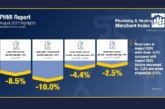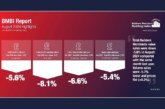
Site security is a perennial issue affecting merchants and their businesses. Indeed, it’s a sad reality that the nature of a builders merchants’ premises lends itself to opportunist acts of theft,which can have a sizeable impact on profits when aggregated over the course of a year. Keen to get the latest industry perspective on minimising risk, PBM spoke to Martyn Kenworthy, Group Loss Prevention Manager at Ridgeons.
How much of an issue is site security to you and your business?
As Group Loss Prevention Manager for Ridgeons, site security, reducing risk and preventing loss is always important. We can’t afford for it not to be an important issue, whether this is to satisfy our insurers, or to reduce the amount we lose from the net profit that we work so hard to achieve.
How have perspectives on security changed over time and are things now better or worse?
I have been in my current position for nearly 12 years and I am fortunate that Ridgeons has always supported me in my aim to secure our assets and reduce our loss, whether this threat comes from our staff, our customers or from outside of the business.
As for whether it is better or worse I wouldn’t like to say — as a regional business, we see fluctuations of incidents identified, with the scope and nature of these changing constantly.
What do you view as the biggest risks to security on your premises?
I would never highlight one area as being our biggest risk to security — indeed, each area of risk has to have a proportionate mitigation to eliminate or reduce that risk. Through a process of physical or procedural control we are able to deter, delay or identify potential risk activities, which we can then proactively address in order to tackle problems.
The principles of security are that layers of defence are the best solution; there is no one single thing that is going to solve all of the issues.
What security measures do you implement on your premises?
Good quality alarms are standard across the Ridgeons estate, and all of our sites have CCTV systems. We use CCTV mainly after an event, for evidence or for intelligence purposes to assist in our investigations — if we know what has happened and how it happened we are able to then propose a proportionate response to this issue.
If we are only speculating at what has happened, we could be wasting time and effort. One example of this might be that a large quantity of stock is not in the branch — if we can track this back via CCTV, we may be able to identify that it is a goods-in error and not a theft issue.
This enables us to highlight and work with the branch to improve the goods-in procedure, bringing specific issues to the attention of suppliers, rather than attempting to identify a thief that doesn’t necessarily exist.
Additionally, we have reduced the number of security officers on our sites, and looked at other ways to address the issues. We have changed the layout at some branches to make the customer area more manageable and emphasised with staff the ways in which they are all able to help reduce loss within the business.
We have also introduced Loss Prevention Officers who visit each branch on a regular basis to work with the branches to address risk, investigate stock loss and incidents and identify ways to improve procedural compliance.
How does site security affect the way in which you sell stock? For example, does the risk of theft prevent you from using merchandising techniques such as self-selection?
We want to work with the other areas of the business and do what is best for our customers, not against them. If there is a commercial reason for merchandising an item in a particular way then we look to provide a solution to mitigate any associated risk.
For me it is about compromising and striking a balance between having items in an area so customers know that it is in stock and that it is easy for them to access, without making the item such high risk that we lose profit on it.
Sharing Best Practice
Martyn Kenworthy believes that sharing and collaborating with other businesses is a key part in improving best practice and understanding emerging threats. He is the Chair of both the DIY and Building Trades Loss Prevention Forum, run by Oris Forums, and also the Builders Merchant Federation Security and Loss Prevention Forum.
Involvement with these groups gives him a wider view of the issues that are faced by others across similar organisations, while also providing him with the opportunity to offer advice to those who don’t have a dedicated individual who is responsible for loss prevention.
If anyone would like further information on either of the forums, please contact Martyn via email: mkenworthy@ridgeons.net









